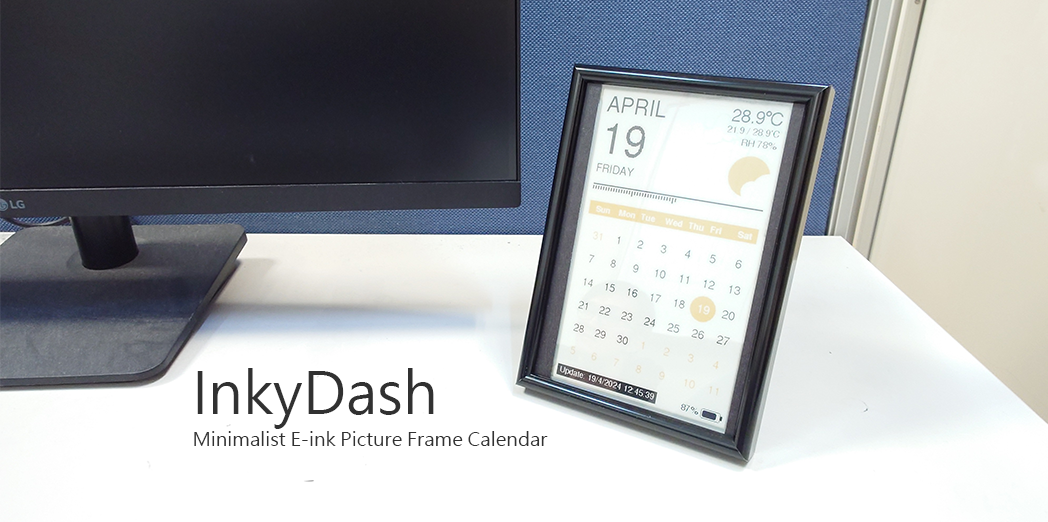The ESP8266 version of InkyCal
|
|
пре 7 месеци | |
|---|---|---|
| InkyDash | пре 7 месеци | |
| card | пре 7 месеци | |
| img | пре 7 месеци | |
| lib | пре 8 месеци | |
| pcb | пре 8 месеци | |
| photo | пре 7 месеци | |
| LICENSE | пре 7 месеци | |
| README.md | пре 8 месеци |
README.md
InkyDash
A simple e-ink / epaper powered calendar with weather information and daily progres bar
Usage
Wiring
If you are using the offical PCB, then follow the silk screen wiring instructions. Otherwise, if you are using generic ESP8266, follow the following wiring instructions to connect your e-ink display SPI control board to your development board.
Wemos D1 mini
BUSY -> D2
RST -> D4
DC -> D3
CS -> D8
CLK -> D5
DIN -> D7
GND -> GND
3.3V -> 3.3V
Generic ESP8266
BUSY -> GPIO4
RST -> GPIO2
DC -> GPIO0
CS -> GPIO15
CLK -> GPIO14
DIN -> GPIO13
GND -> GND
3.3V -> 3.3V
Customizations
Low Power Mode
If your InkyDash is running off battery, set LOW_POWER_MODE to true and add a resistor between the D0 / GPIO16 pin to the RST pin of the ESP8266. This resistor is critical for the ESP8266 to wake up from deep sleep mode. The resistor values depends on your development board, but usually 330R to 1k Ohm is commonly used by the community.
Weather Locations
You can change your weather location by editing these few lines in the weather.ino file.
//Latitude & Longitude of your location
/* Hong Kong */
const String lat = "22.2783";
const String lon = "114.1747";
/* Timezone */
const String timezone = "Asia/Singapore";
The weather information is provided by open-meteo.com. They do not require API key for request count less than 500 per hour. You can modify where the weather API grab data if you have your own weather station at home. You just need to modify the following in weather.ino.
// In updateCurrentWeatherInfo() function
//Update the current lines to your data sources
currentTemp = doc["current"]["temperature_2m"];
currentHumd = doc["current"]["relative_humidity_2m"];
currentRain = doc["current"]["rain"];
minTemp = doc["daily"]["temperature_2m_min"][0];
maxTemp = doc["daily"]["temperature_2m_max"][0];
Firmware Downloading
Open "InkyDash" project with Arduino IDE and upload the firmware into the InkyDash control board.
Supported Eink Models
Basically you can try this with any 7.5 inch eink display with 3 colors.
GxGDEW075Z09 (Recommend)
GxGDEW075Z08 (Not Tested)
GxGDEW075T8 (Not Tested, Require some color code change)
GxGDEW075T7 (Not Tested, Require some color code change)
Interface
The interface can be changed in the draw drawHomeFrame() function.
License
CopyRight tobychui (C) All Right Reserved
